Trekking and Hiking
Trekking and hiking in Nepal are activities that stand out in the global adventure travel scene due to the country’s unique geographical features and stunning natural beauty. From gentle walks through lush green valleys to challenging climbs up some of the world’s highest peaks, Nepal offers a range of experiences that cater to every level of trekker and hiker. Here’s a closer look at what makes trekking and hiking in Nepal so special:
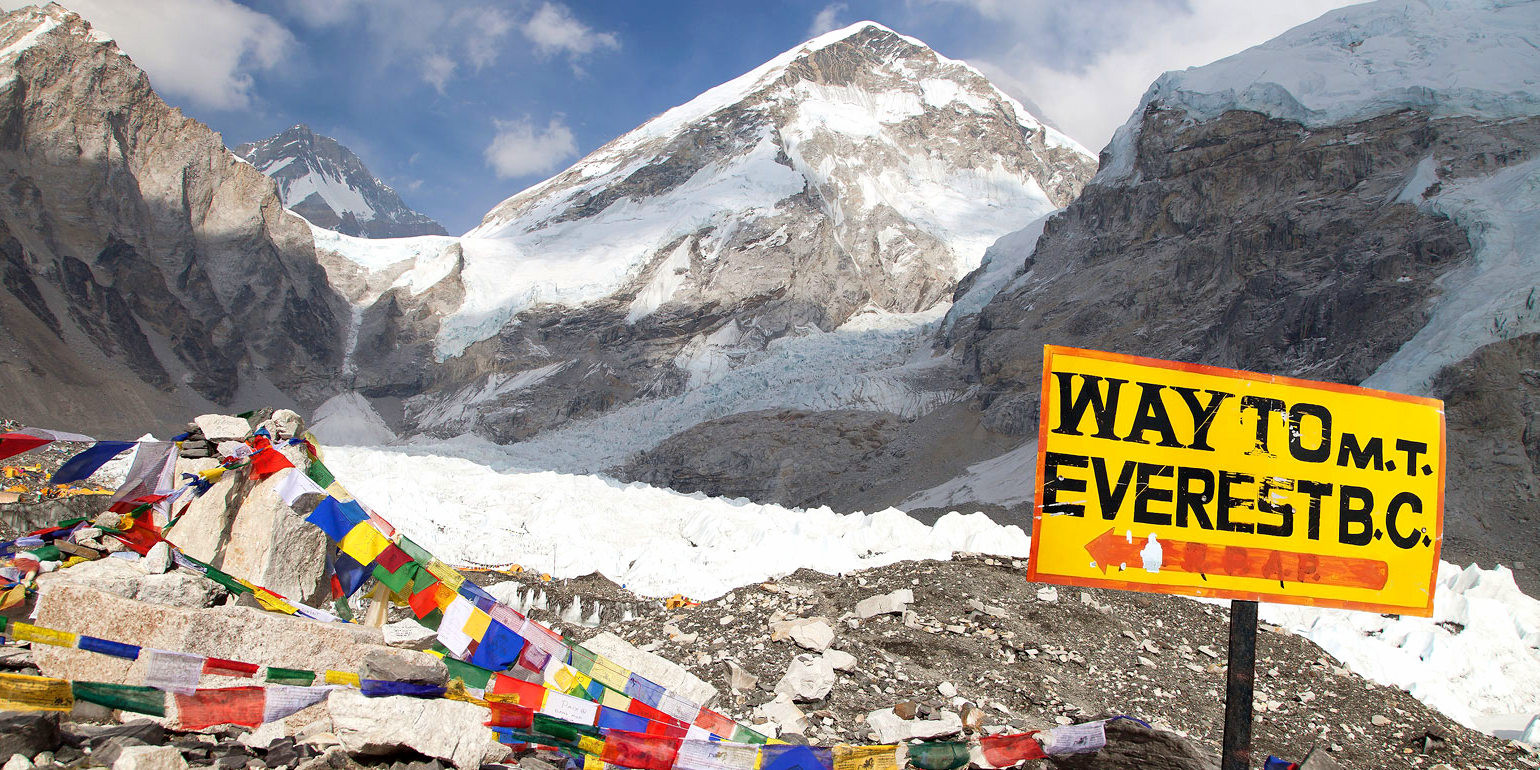
-
Diverse Trails: Nepal’s trails vary from short, scenic hikes that can be completed in a day to lengthy, challenging treks that require weeks to complete. Popular treks like the Everest Base Camp Trek and the Annapurna Circuit Trek offer well-established routes with tea houses and lodges along the way, providing comfortable stops to rest and refuel.
-
Spectacular Landscapes: The country’s varied topography means that every day on the trail brings a new type of scenery. Trekkers can walk through rhododendron forests, alpine meadows, rocky passes, and alongside glacial rivers, all with the backdrop of some of the world’s highest mountains.
-
Cultural Immersion: Trekking in Nepal is not just about the physical journey but also the cultural experience. Many trails wind through remote villages where life has remained unchanged for centuries. Trekkers have the opportunity to meet local people, learn about their traditions, and experience the warm hospitality for which Nepalis are known.
-
Accessibility and Options: From the easily accessible hills around Kathmandu, such as Shivapuri or Nagarkot, to the remote and wild trails in the Upper Mustang or Dolpo regions, Nepal caters to all levels of experience and fitness. Moreover, various agencies offer customized Nepal Hiking Tours that include guides, porters, and planned itineraries to make the logistics easier.
-
Wildlife and Natural Beauty: Besides the stunning mountain views, hiking in Nepal also offers the chance to encounter wildlife. The lower regions are home to species like the red panda and leopard, while the high-altitude areas may offer glimpses of the elusive snow leopard or Himalayan tahr.
Trekking and hiking in Nepal provide a blend of adventure, solitude, and unparalleled scenic beauty, all enriched by the cultural encounters along the way. Whether you are a seasoned trekker looking for your next big challenge or a casual hiker wanting to soak in beautiful landscapes, Nepal’s trails promise an unforgettable experience.
Cultural Exploration
Cultural exploration in Nepal is a journey through a landscape rich with history and tradition, where every corner offers a window into the past and present of its diverse people. With an array of ethnic groups and religions, Nepal's cultural fabric is as varied as its geography. Here are some key aspects and opportunities for cultural exploration in Nepal:
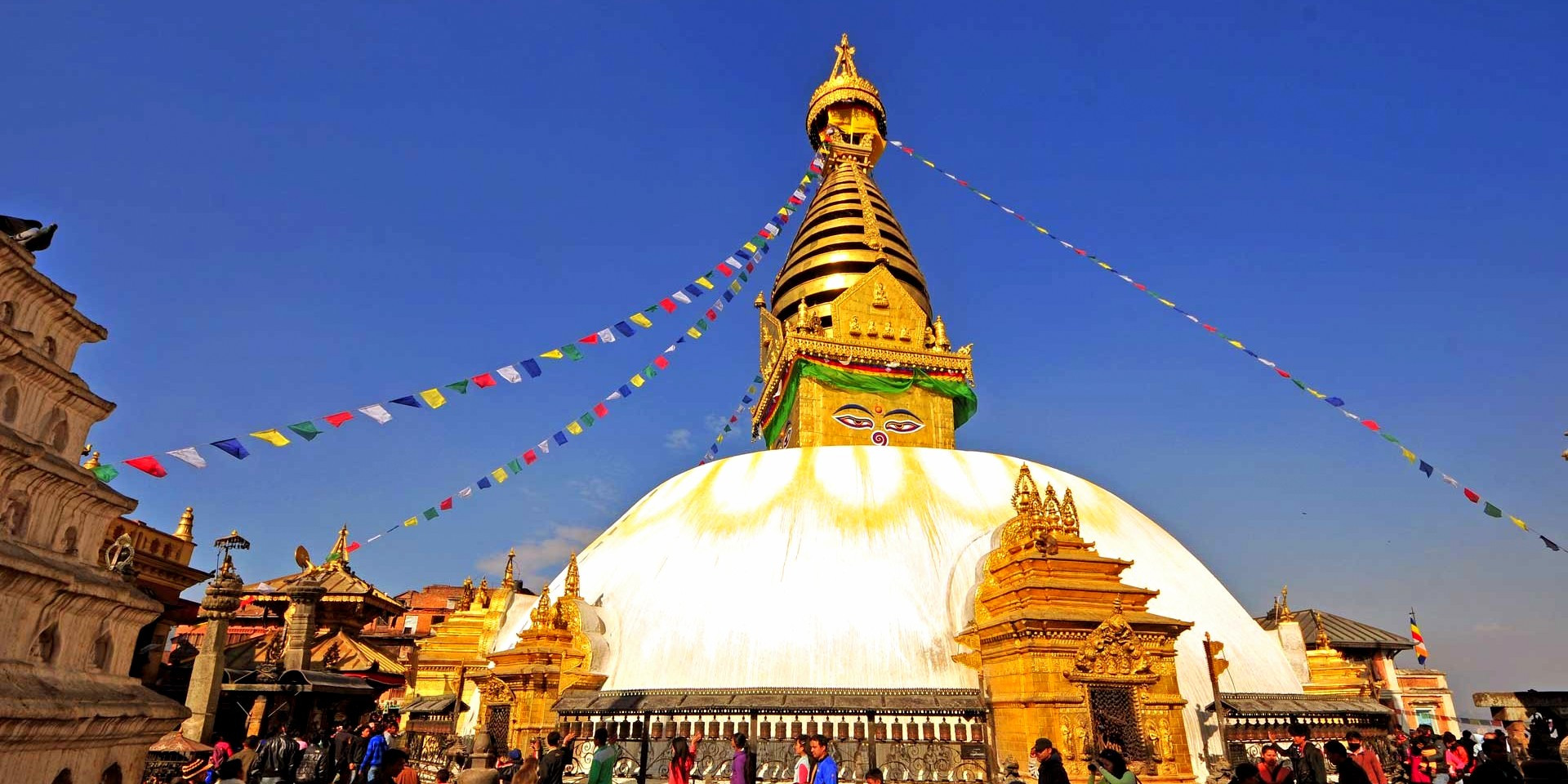
-
Historical Cities of the Kathmandu Valley: The Kathmandu Valley, home to the capital city and its surrounding towns of Patan and Bhaktapur, offers a condensed view of Nepali culture with its centuries-old temples, shrines, and palaces. These cities are treasure troves of ancient Newar architecture and artistry, evident in landmarks like the Patan Durbar Square and the Bhaktapur Durbar Square, both UNESCO World Heritage sites. The famous Swayambhunath and Pashupatinath temples offer insights into Buddhist and Hindu traditions that have coexisted in Nepal for centuries.
-
Lumbini - The Birthplace of Buddha: Lumbini is not only a pivotal site for Buddhist pilgrims but also a symbol of peace and serenity worldwide. Visitors can explore the Maya Devi Temple, which marks the exact spot where Buddha was born, and stroll through monastic zones that house monasteries donated by Buddhist communities from different countries, reflecting a variety of architectural styles and traditions.
-
Festivals and Traditions: Nepal's calendar is full of festivals, which are excellent opportunities for visitors to experience the country's culture in vibrant and dynamic ways. Major festivals like Dashain and Tihar are celebrated by most Nepalis, while others like Indra Jatra and Mani Rimdu are specific to certain ethnic groups or regions. Participating in or witnessing these festivals can provide deeper insight into the values and beliefs of the Nepali people.
-
Village Homestays: For a more immersive experience, nothing beats staying in a village homestay. This allows travelers to live with a local family, share meals, and participate in daily activities. It's a unique opportunity to learn about rural life and the challenges and joys that come with it. Regions like the Annapurna and Everest offer community-based homestay programs where visitors can combine cultural exploration with trekking.
-
Traditional Arts and Crafts: Exploring Nepal's traditional arts and crafts provides another layer of cultural insight. In places like the Thamel area in Kathmandu, visitors can observe artisans at work, crafting everything from thangka paintings and pottery to intricate jewelry and handwoven textiles. Workshops or classes on crafts like pottery or Nepali cooking can also be arranged for a hands-on experience.
-
Architectural Tours: Nepal's diverse architecture is a testament to its historical and cultural depth. From the stupas and pagodas that dot the landscape to the finely crafted wood and metal works in the ancient durbar squares, architectural tours can help visitors appreciate the craftsmanship and aesthetic sensibilities that have shaped Nepali society over millennia.
Cultural exploration in Nepal is both enriching and enlightening, offering insights not only into the ancient rituals and traditions but also into the contemporary issues and achievements of the Nepali people. Whether it’s through art, architecture, festivals, or everyday interactions, Nepal provides a profound cultural journey for all who visit.
Wildlife and Safari
Nepal, while famed for its mountains, also offers rich biodiversity and unique ecosystems in its lowland regions, making it a fantastic destination for wildlife enthusiasts and safari adventurers. The subtropical Terai belt in southern Nepal hosts several renowned national parks where visitors can enjoy thrilling wildlife safaris. Here’s a deeper look into wildlife and safari opportunities in Nepal:
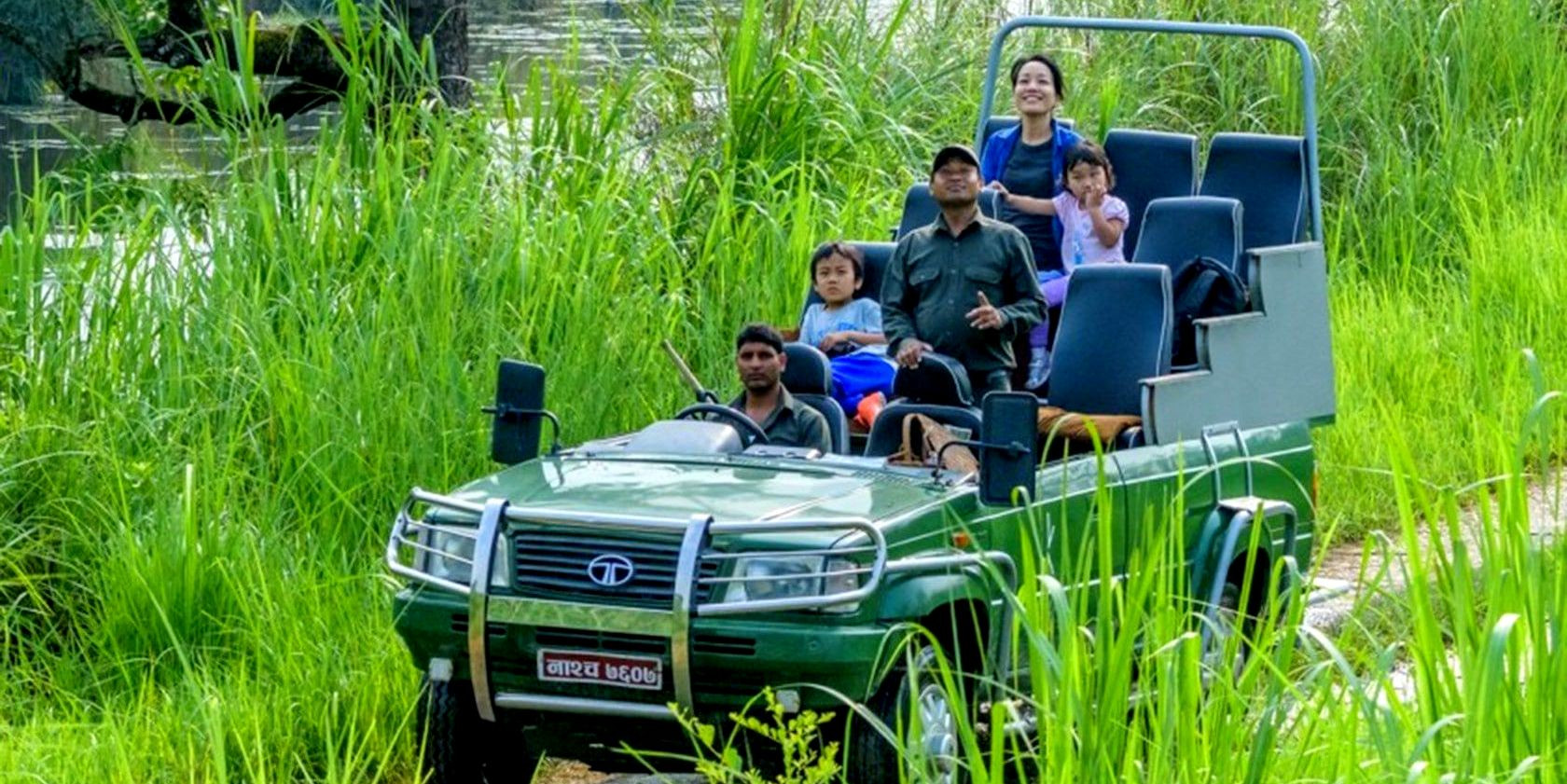
-
Chitwan National Park: Recognized as a UNESCO World Heritage Site, Chitwan National Park is the most famous wildlife park in Nepal. It offers a sanctuary to over 500 species of birds, as well as a wide array of mammals including Bengal tigers, one-horned rhinoceroses, elephants, and several species of deer. Visitors can explore the park via jeep safaris, canoe trips, or guided jungle walks, which provide ample opportunities to observe and photograph the diverse wildlife in their natural habitat. The park's efforts in rhino conservation have been notably successful, making it a global leader in ecological preservation.
-
Bardia National Park: Less frequented by tourists and thereby more pristine, Bardia National Park is another excellent location for wildlife safaris in Nepal. It covers a larger area than Chitwan and offers similar biodiversity with better chances of spotting the elusive Bengal tiger. Other major attractions include wild elephants, Gangetic dolphins, and the endangered gharial crocodile. Like Chitwan, Bardia provides jeep safaris and guided walks, which are excellent for bird-watching and encountering smaller wildlife that thrives in the dense jungle.
-
Koshi Tappu Wildlife Reserve: A haven for bird watchers, Koshi Tappu Wildlife Reserve lies on the floodplain of the Sapta Koshi River in eastern Nepal. It's known for hosting one of the few populations of the endangered wild water buffalo, and over 450 species of birds, including many migratory species that stop here during their annual journeys. Activities in Koshi Tappu often involve tranquil boat rides and guided walks, offering a peaceful experience in contrast to the more adventure-driven safaris of Chitwan and Bardia.
-
Safari Experiences: Safaris in Nepal are not just about the animals but are also immersive cultural experiences. Many safari tours include cultural performances, local village tours, and opportunities to learn about the conservation efforts which are integral to the region's environmental health. The best times for wildlife viewing are early morning and late afternoon when animals are most active.
-
Conservation Efforts: Engagement in Nepal's wildlife tourism often supports conservation efforts directly. These parks and reserves are critical in the fight against poaching and habitat destruction. Visitors contribute to this cause, helping fund protection and research projects through their entrance fees and donations.
-
Preparing for Your Safari: When planning a safari in Nepal, it's important to pack appropriately for the climate, which can be quite hot and humid in the Terai region. Lightweight clothing, good walking shoes, binoculars for bird watching, and a good camera with a zoom lens for animal sightings are essential. Malaria prophylaxis may be recommended depending on the season and areas visited, so consulting with a travel health provider is advisable.
Exploring Nepal's wildlife and natural reserves offers a different kind of thrill than its mountainous adventures but is equally rewarding. Each park and reserve provides a unique glimpse into the sub-Himalayan ecosystems, making Nepal a comprehensive destination for nature lovers.
Adventure Sports
Nepal, with its dramatic landscapes and varying altitudes, provides an ideal playground for adventure sports enthusiasts. From raging river rapids to soaring paragliding flights, the country offers a multitude of thrilling activities that attract thrill-seekers from around the world. Here's an overview of some of the most popular adventure sports available in Nepal:

-
White-Water Rafting and Kayaking: Nepal's numerous fast-flowing rivers, originating from the high Himalayas, offer excellent opportunities for white-water rafting and kayaking. The Trishuli River, easily accessible from Kathmandu, is popular for day trips and beginner rafting experiences. For those seeking more intense rapids, the Bhote Koshi, Sun Koshi, and Karnali rivers provide longer and more challenging courses, with rapids ranging from Class III to Class V. These rivers not only test your rafting skills but also journey through scenic gorges and traditional villages.
-
Paragliding: The lakeside town of Pokhara, set against the backdrop of the Annapurna massif, is one of the world's best paragliding destinations. Paragliding in Pokhara offers stunning views of lakes and mountains, with the peace of soaring like a bird. Tandem flights are common, where you fly with an experienced instructor, making it accessible even for beginners without prior experience.
-
Bungee Jumping: For adrenaline junkies, bungee jumping in Nepal provides a thrilling leap into the unknown. The most famous spot is over the Bhote Koshi River, one of the world's highest bungee jumps at 160 meters. Another site is near Pokhara, where you can dive into a gorge over the Hemja river. Both locations offer not just the excitement of the jump but also beautiful natural surroundings.
-
Mountain Biking: Mountain biking is an emerging adventure sport in Nepal, offering another exciting way to explore the rugged terrain. The Kathmandu Valley has several trails suitable for bikers of all skill levels, while the Annapurna Circuit and Upper Mustang offer more challenging routes that traverse through remote areas, providing both cultural immersion and physical challenge.
-
Rock Climbing: Rock climbing in Nepal is growing in popularity, with both natural and artificial sites to cater to enthusiasts. The Nagarjun Forest Reserve and the cliffs around the Kathmandu Valley offer great natural climbing experiences. For those looking to hone their skills or climb regardless of weather conditions, indoor climbing gyms in Kathmandu provide excellent facilities.
-
Zip-lining: One of the most exhilarating ways to enjoy Nepal’s scenery is zip-lining. Pokhara offers one of the world’s longest, steepest, and fastest zip lines, which descends 600 meters and travels at speeds of up to 120 km/h. It’s an incredible way to experience a rush while enjoying panoramic views of the Himalayas.
These adventure sports in Nepal are not only about thrills but also about enjoying and respecting the natural environment. They offer a unique perspective on the country’s diverse landscapes, from its highest peaks to its deepest rivers. Whether you’re a seasoned adventurer or a curious novice, Nepal’s array of options ensures something is thrilling for everyone.
Aerial Adventures
Nepal's unique topography, ranging from the lowland Terai to the towering peaks of the Himalayas, creates perfect opportunities for aerial adventures that offer breathtaking perspectives of its diverse landscapes. Here are some of the most popular aerial activities available for adventure seekers in Nepal:
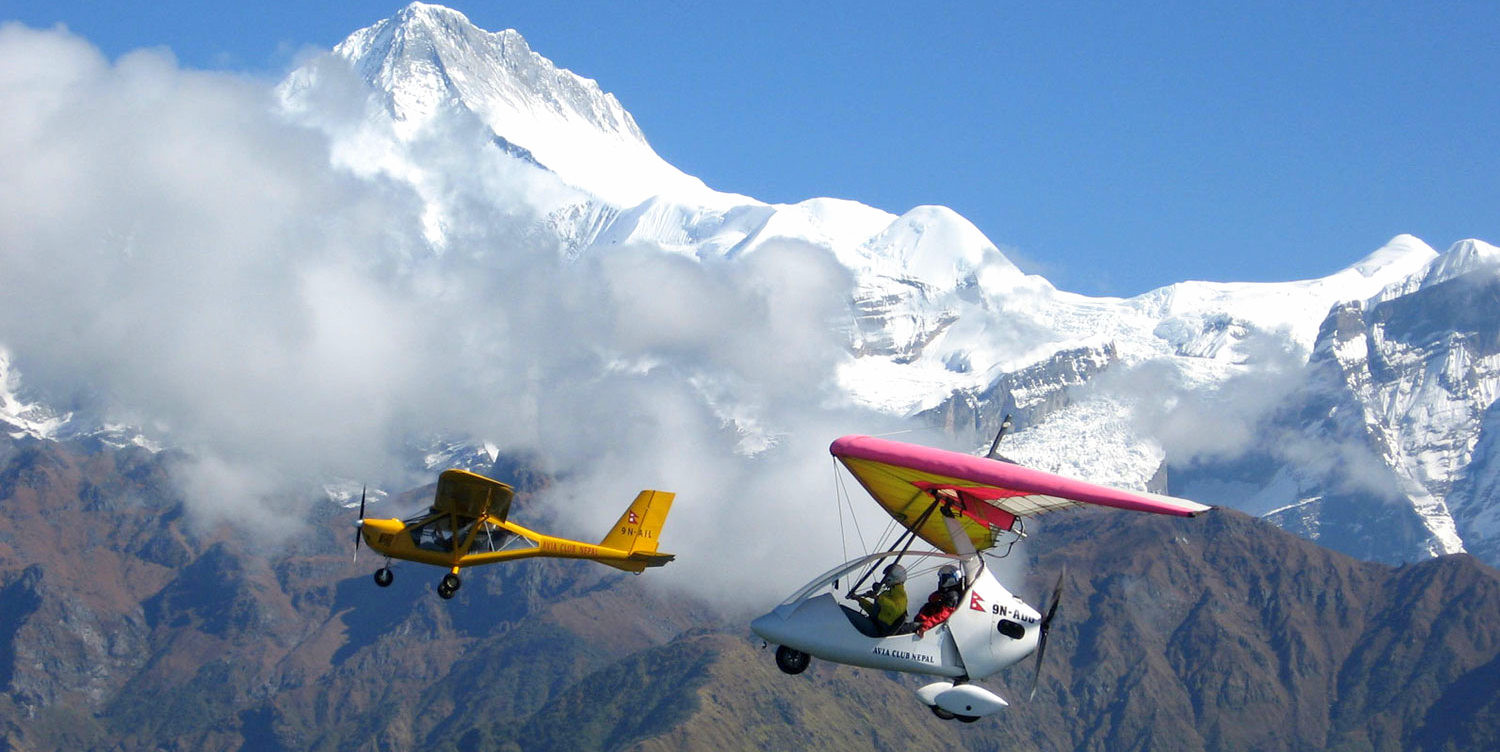
-
Mountain Flights: One of the most awe-inspiring experiences in Nepal is a mountain flight that offers panoramic views of the Himalayas, including Mt. Everest. These flights typically depart from Kathmandu and fly along the Himalayan range, providing passengers with a close-up view of the world's highest peaks from the comfort of a plane. This is an excellent option for those who may not have the time or ability to trek but still want to experience the majesty of these mountains up close.
-
Paragliding: Paragliding in Pokhara is not just popular; it's an experience of a lifetime, combining the thrill of flight with incredible views of the Annapurna range and the serene Phewa Lake below. The thermals rising off the hills around Pokhara create ideal conditions for paragliding, and a number of operators offer tandem flights which allow everyone, regardless of experience, to enjoy this adventure safely.
-
Hot Air Ballooning: Hot air ballooning is a more serene way to enjoy Nepal’s natural beauty, offering a quiet and gentle ride over the stunning landscapes. Flights typically take place in the Pokhara region, providing dramatic views of the Annapurna range, Dhaulagiri, and the beautiful valleys and lakes below. This peaceful experience is a wonderful way to see the Himalayan vistas at sunrise or sunset.
-
Ultralight Flights: For a more intimate flying experience, ultralight flights in Pokhara allow you to fly in a small, two-seater aircraft, which offers unobstructed views of the mountains and the countryside. These flights can be customized to fly closer to specific peaks or areas of interest, making them a fantastic option for photography enthusiasts and adventure seekers alike.
-
Helicopter Tours: Helicopter tours provide a versatile and luxurious way to explore Nepal, ideal for those who wish to visit remote parts of the Himalayas without the need for long treks. Popular helicopter tours include flights to Everest Base Camp, Annapurna Base Camp, and Langtang Valley. These tours can also include stops where you can step out and spend some time in the high-altitude environment.
-
Skydiving: For the ultimate thrill, skydiving over Everest presents an adrenaline-pumping opportunity to experience free-fall against the backdrop of the Earth’s highest peaks. This extreme adventure is offered by only a few operators in the world and involves jumping from a helicopter with the view of Everest and its surrounding peaks during the descent.
Each of these aerial adventures offers a unique perspective of Nepal's stunning landscapes, combining the thrill of flight with the unparalleled beauty of the country. Whether you seek the calm of a hot air balloon ride or the extreme rush of skydiving above Everest, Nepal’s skies provide the ultimate arena for aerial adventurers.
Nature and Scenery
Nepal is renowned not only for its rich cultural heritage and thrilling adventure sports but also for its breathtaking natural landscapes. The country offers an array of scenic wonders, from towering mountain ranges and verdant forests to tranquil lakes and rushing rivers. Here’s a look at some of the most captivating aspects of Nepal’s nature and scenery:
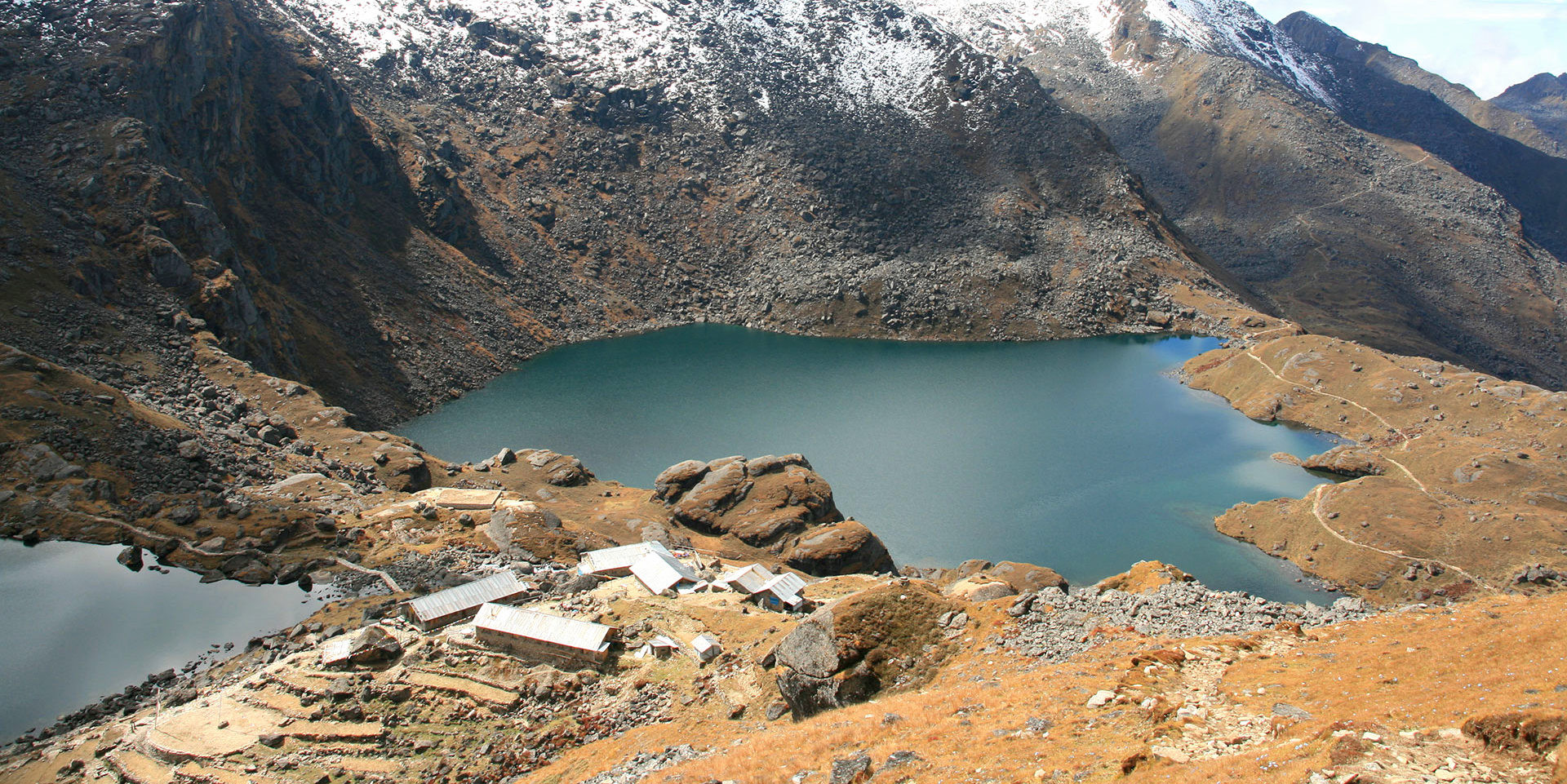
-
Himalayan Panoramas: The Himalayas are undoubtedly the star attraction of Nepal's natural scenery. Home to eight of the world’s ten highest peaks, including Mount Everest, the Himalayas offer awe-inspiring views that draw trekkers and mountaineers from across the globe. The viewpoints from places like Poon Hill, Kala Patthar, and Gokyo Ri provide unforgettable sunrise and sunset views over the mountain ranges.
-
Lush Landscapes: Beyond the high-altitude terrain, Nepal’s mid-hills and valleys are covered in lush forests and terraced fields, particularly in regions like the Annapurna and Langtang. These areas showcase the agricultural practices of local communities, with vibrant green and golden hues that change with the seasons. Hiking through these areas offers a closer look at rural Nepalese life and the country’s natural biodiversity.
-
Serene Lakes: Pokhara is known for its beautiful lakes, with Phewa Lake being the most prominent. Surrounded by mountains with the Tal Barahi Temple situated on an island in its center, Phewa Lake is a popular spot for boating and provides a peaceful setting for relaxation and reflection. Other notable lakes include Rara Lake in the remote Mugu district, known as the "Queen of Lakes" for its astonishing blue waters and tranquil surroundings.
-
Rivers and Waterfalls: The rivers of Nepal, fed by the melting snow from the Himalayas, are not only crucial for rafting and kayaking but also enhance the scenic beauty of the landscape. The Trishuli and Bhote Koshi are popular for their white-water adventures, while the quieter Budhi Gandaki and Marsyangdi rivers wind through picturesque gorges and valleys. Additionally, the waterfalls, such as the Davis Falls in Pokhara, add to the scenic allure, creating stunning settings for photography and nature walks.
-
National Parks and Wildlife Reserves: Nepal’s national parks and wildlife reserves, such as Chitwan and Bardia, protect diverse ecosystems that are home to a variety of flora and fauna. These parks offer safaris where visitors can see wildlife like rhinoceroses, tigers, and elephants in their natural habitats. The conservation areas, including Annapurna and Manaslu, provide a sanctuary for numerous plant and animal species, maintaining ecological balance and offering a haven for nature lovers.
-
Flora and Fauna: Nepal’s varying altitudes and climates support a rich array of plant and animal life. From rhododendrons and orchids that bloom vibrantly in the spring to the elusive snow leopard and vibrant bird species like the Danphe, the national bird of Nepal, the country’s biodiversity is both a draw for scientists and a delight for nature enthusiasts.
Exploring Nepal's natural environments provides not only a chance to witness the grandeur of the Earth’s highest peaks but also to enjoy serene lakes, lush forests, and diverse wildlife. Whether you are trekking through the remote wilderness or enjoying a quiet moment by a lake, the natural beauty of Nepal offers a profound sense of peace and wonder.
Unique Experiences
Nepal, a land steeped in ancient traditions and blessed with stunning natural beauty, offers a plethora of unique experiences that go beyond the usual tourist trails. These activities allow visitors to immerse themselves deeply in the local culture, explore untouched natural environments, and engage in experiences that are both enriching and memorable. Here are some of the unique experiences you can only find in Nepal:
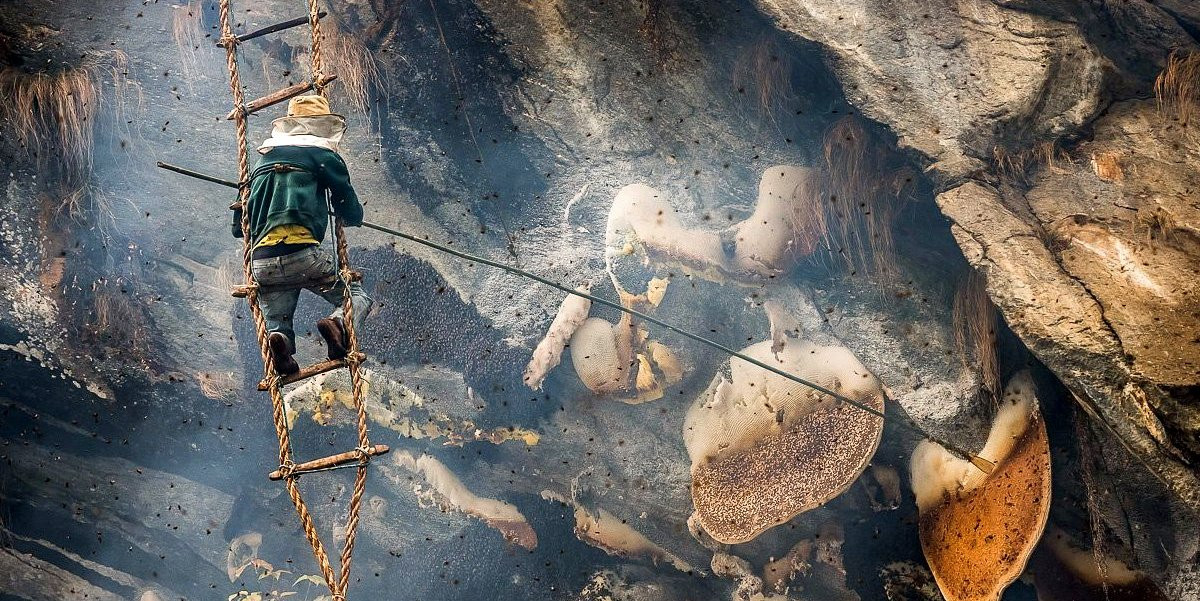
-
Teahouse Trekking: One of the most distinctive aspects of trekking in Nepal is the teahouse culture. As you trek through popular routes like the Everest Base Camp Trek or the Annapurna Circuit Trek, you'll stay in teahouses—small, family-run lodges that offer basic accommodations and home-cooked meals. This offers a wonderful opportunity to interact with local families, understand their way of life, and enjoy warm Nepali hospitality in the heart of the Himalayas.
-
Honey Hunting Tours: Experience the ancient tradition of honey hunting, a unique and thrilling activity practiced by the Gurung and Magar communities in the remote hill regions of Nepal. Participants can observe locals as they harvest honey from the cliffs of high mountains, an ancestral skill that involves great risk and skill. This is not only a rare spectacle but also a deep dive into the traditions of Nepal’s indigenous communities.
-
Meditation Retreats: Given its profound spiritual heritage, Nepal is a prime destination for meditation and spiritual retreats. Many visitors come to Nepal to learn meditation techniques in a serene setting, often in monasteries or retreat centers that overlook majestic mountains or peaceful valleys. These retreats offer guidance in mindfulness and Buddhist teachings, providing a soul-soothing experience away from the chaos of modern life.
-
Cultural Homestays: Engage in a cultural homestay, particularly in places like the Kathmandu Valley or the rural villages of the Annapurna region. These homestays allow you to live with local families, participate in daily chores, and even join in local festivals and ceremonies. It’s an immersive way to learn about Nepali culture, cuisine, and family dynamics.
-
Rato Machhindranath Festival: Participate in or witness the Rato Machhindranath Festival, one of the largest and most colorful festivals in the Kathmandu Valley. This annual event, held primarily in Patan, features a chariot procession honoring Machhindranath, the god of rain, which is vital for the agricultural season. The festival is a fantastic spectacle of community participation, traditional music, and religious devotion.
-
Mountain Flight: For those who may not be keen on trekking, a mountain flight offers an unforgettable aerial tour of the Himalayas, including Mount Everest. These flights provide spectacular views of the world's highest peaks from the comfort of a plane, complete with a pilot's commentary on each of the mountains.
-
Cooking Classes: Take a Nepali cooking class to learn how to prepare traditional dishes such as dal bhat (lentil soup and rice), momos (dumplings), and other local cuisines. Cooking classes usually involve a trip to a local market to select fresh ingredients, followed by a hands-on lesson in a local’s kitchen.
These unique experiences in Nepal provide more than just memories; they offer a deeper understanding of the country’s cultural landscape and natural wonders, making your travel experience truly transformative.
Tips for Things to do in Nepal
When visiting Nepal and partaking in its diverse activities, being well-prepared can greatly enhance your experience. Here are combined tips across various activities to ensure a memorable and safe trip:
General Preparation
-
Acclimatize Properly: Whether trekking in the high mountains or traveling to different altitudes, allow your body to adjust to altitude changes to avoid sickness.
-
Respect Local Customs: Dress modestly, especially when visiting religious sites, and learn a few basic Nepali phrases to interact respectfully with locals.
-
Stay Hydrated and Sun-Protected: Carry a reusable water bottle, use water purification methods as needed, and apply sunscreen regularly.
Trekking and Hiking
-
Hire Local Guides: This not only enhances safety but also enriches your trekking experience with local insights.
-
Pack Smart: Equip yourself with sturdy trekking boots, layered clothing, and essential gear like a water filter and a comfortable backpack.
Cultural Tours and Festivals
-
Engage Actively: Try to participate in local festivals if possible and always ask for permission before photographing people.
-
Learn from Locals: Staying in homestays or taking guided cultural tours can provide deeper insights into Nepali life and traditions.
Wildlife Safaris
-
Choose the Right Season: Visit during the dry seasons when wildlife is more commonly seen near water sources.
-
Follow Guidelines: Always adhere to the rules of wildlife parks and reserves for your safety and to ensure the well-being of the animals.
Adventure Sports
-
Verify Safety Standards: Opt for reputable companies that adhere to high safety standards in activities like rafting, paragliding, and bungee jumping.
-
Know Your Limits: Be realistic about your physical abilities and choose activities that suit your skill level.
Practical Tips
-
Use Cash: Keep local currency on hand for purchases in remote areas where credit cards aren't widely accepted.
-
Prepare for Connectivity Issues: Internet and mobile services may be unreliable, especially in remote regions, so plan accordingly.
By following these tips, you can navigate your way through Nepal's adventures safely and respectfully, ensuring a trip that's both exciting and enriching. Whether you're hiking up to Everest Base Camp, participating in a vibrant festival, or wildlife spotting in Chitwan, these suggestions will help you make the most of your Nepalese journey.
Ideal Time for Things to do in Nepal
The ideal time to visit Nepal largely depends on the activities you plan to engage in and the regions you wish to explore. Nepal experiences four main seasons, each offering unique opportunities and attractions:
Autumn (September to November)
-
Best for Trekking and Hiking: Autumn is the peak season for trekking in Nepal due to clear skies, moderate temperatures, and excellent visibility, making it ideal for high-altitude treks like the Everest Base Camp Trek and the Annapurna Circuit Trek.
-
Cultural Festivals: This season also coincides with major festivals such as Dashain and Tihar, providing rich cultural experiences.
Winter (December to February)
-
Lower-altitude Trekking: Winter is suitable for trekking at lower altitudes, as the higher regions can be extremely cold and prone to snow. Destinations like the Ghorepani Poon Hill trek are popular during this time.
-
Bird Watching: Winter is also a great time for bird watching in the lower regions, such as Koshi Tappu Wildlife Reserve, as migratory birds visit Nepal during this period.
Spring (March to May)
-
Ideal for Trekking and Expeditions: Spring is another excellent time for trekking, with warmer weather and the hillsides covered in blooming rhododendrons and other flowers. It’s also a good season for mountaineering expeditions.
-
Wildlife Viewing: As the snow melts, wildlife becomes more active, making it a good time for safaris in Chitwan and Bardia National Parks.
Summer/Monsoon (June to August)
-
Challenging for Trekking: The monsoon season brings heavy rains, which can cause landslides and make trekking trails slippery and challenging. However, it’s the best time for keen botanists as the valleys are lush and green.
-
Cultural Immersion: It's a good time for cultural tours in cities where the rain doesn’t disrupt daily activities as much. Participating in indoor cultural workshops or cooking classes can be enjoyable.
- Less Crowded: If you don’t mind the rain, this season also means fewer tourists and more opportunities to interact with locals.
Each season in Nepal offers distinct experiences, whether you're looking for adventure in the Himalayas or cultural immersion in its cities. Choosing the right time for your visit depends on your primary interests and the specific regions you plan to explore in Nepal.
For all sorts of travelers, Nepal provides a wide range of unforgettable experiences. Nepal is perfect for nature lovers, culture buffs, and thrill seekers since it offers everything from fantastic mountain hikes in the Himalayas and historical city tours to wildlife safaris and spiritual retreats. Nepal is a versatile year-round destination since each of the distinctive seasons of the country presents different chances. Whether you want excitement, peace, or cultural immersion, Nepal is a top destination that guarantees every guest a vibrant tapestry of experiences.
FAQs for Things to do in Nepal
Q. What is the best time to visit Nepal for trekking?
A. The best times for trekking in Nepal are during the pre-monsoon (spring: March to May) and post-monsoon (autumn: September to November) seasons when the weather is clear and stable, offering the best mountain views.
Q. Do I need a guide for trekking in Nepal?
A. While not mandatory for all treks, hiring a guide is highly recommended, especially for remote or challenging routes. Guides ensure safety, help with navigation, and provide insights into local culture and nature.
Q. Can I do adventure sports in Nepal if I'm not experienced?
A. Yes, Nepal offers adventure sports for all experience levels, including beginners. Operators provide necessary training and safety equipment, especially for activities like paragliding, bungee jumping, and rafting.
Q. What cultural experiences should I not miss in Nepal?
A. Key cultural experiences include visiting UNESCO World Heritage Sites in the Kathmandu Valley, attending festivals like Dashain and Tihar, exploring Lumbini (the birthplace of Buddha), and enjoying a traditional Nepali meal.
Q. Is it safe to travel to Nepal?
A. Nepal is generally safe for travelers. However, it's important to take standard safety precautions, stay informed about local conditions, especially when trekking or engaging in adventure activities, and respect local customs and laws.
Q. What should I pack for a trip to Nepal?
A. Packing depends on the activities planned. Essentials include sturdy hiking boots, layers for changing weather, a first-aid kit, water purification tablets, and sunscreen. For cultural visits, modest clothing is recommended.
Q. Do I need a visa to visit Nepal?
A. Most foreigners require a visa to enter Nepal, available on arrival at Tribhuvan International Airport and certain land crossings. Check the latest visa requirements before your trip.
Q. How can I avoid altitude sickness in Nepal?
A. To prevent altitude sickness, ascend gradually, acclimatise properly, stay hydrated, and avoid alcohol. Consider carrying altitude sickness medication after consulting with a healthcare professional.
Q. What wildlife can I see in Nepal?
A. Nepal's national parks, like Chitwan and Bardia, are home to wildlife such as the Royal Bengal tiger, one-horned rhinoceros, elephants, and various bird species.
Q. Is it possible to visit Everest Base Camp without trekking?
A. Yes, for those unable to trek, helicopter tours to Everest Base Camp offer a way to experience the majesty of Everest without the physical exertion of a trek.
For Nepal tour itinerary suggestions please follow Here
If you are looking for different kinds of /customized Nepal Packages, feel free to contact us.









